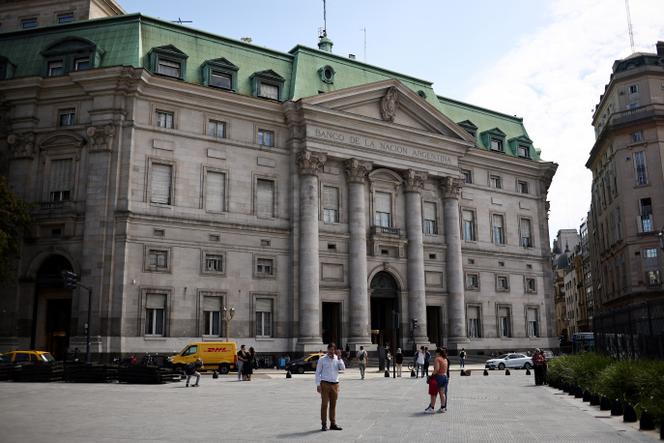
Argentine President Javier Milei announced on Friday, April 11, that the country's libertarian government would lift the its strict capital and currency controls in a few days, a high-stakes gamble made possible by a new loan from the International Monetary Fund. Shortly afterward, Milei, flanked by his ministers, addressed his nation on television. "Today we are breaking the cycle of disillusionment and disenchantment and are beginning to move forward for the first time," he said. "We have eliminated the exchange rate controls on the Argentine economy for good." The government said it would $12 billion from the IMF on Tuesday – a bigger-than-expected upfront sum that gives Argentina's reserves breathing room to make the major change and reflects the fund's confidence in Milei's radical reforms. "The program is unprecedented in supporting an economic plan that has already yielded results," Milei said.
The IMF's executive board late Friday green-lit a $20 billion bailout package , which offers a lifeline to Argentina's dangerously depleting foreign currency reserves over the next four years. The fund praised President Milei's tough austerity program and zero-deficit fiscal policy, saying the program sought to "consolidate impressive initial gains" and address "remaining macroeconomic vulnerabilities." "Against this backdrop, the authorities are embarking on a new phase of their stabilization plan," said IMF Managing Director Kristalina Georgieva, adding that Argentina has committed to doubling down on spending cuts and economic deregulation and transitioning toward a new foreign currency exchange regime.
As well as the IMF's new four-year $20 billion bailout for the South American nation, the World Bank said it would pump $12 billion into the economy and the Inter-American Development Bank (IDB) announced plans for a $10 billion deal.
A tangle of regulations
Earlier, Economy Minister Luis Caputo also said the IMF's executive board had announced the deal to the country: "The agreement will allow us, starting Monday, to lift the exchange rate controls that so severely limit the normal functioning of the economy," Caputo said from the government headquarters in Buenos Aires.
The capital controls, known here as "el cepo," or "the clamp, " are a tangle of regulations that help to stabilize the peso at an official rate and prevent capital flight from Argentina. Imposed by a previous administration in 2019, the restrictions clamp down on individuals' and companies' access to dollars, discouraging the foreign investment that Milei needs to achieve his goal of transforming heavily regulated Argentina into a free economy.
The restrictions made it almost impossible for ordinary Argentines to purchase dollars, giving rise to a black market that is technically illegal but that almost every Argentine uses to sell their depreciating pesos anyway. Their removal takes effect on Monday.
Letting the Argentine peso float somewhat
The new policy also involves cutting the Argentine peso free from its peg to the dollar. But instead of a risky free float, Argentina is allowing the peso to trade within a so-called currency band that ranges from 1,000 to 1,400 pesos per dollar. The band will expand 1% each month, the bank said. This breaks from Milei's current policy of letting the peso weaken at a pace of 1% against the dollar each month. That crawling peg had drawn backlash from investors worried about the central bank burning through its reserves to prop up the peso. It was forced to spend $2.5 billion to defend the official exchange rate in just the past few weeks.
The Central Bank said the $200-per-month limit on Argentine citizens accessing greenbacks will also be lifted.
When announcing the removal of exchange controls Economy Minister Luis Caputo insisted it was "not a devaluation." "The truth is, we don't know where the dollar will end up," he said.